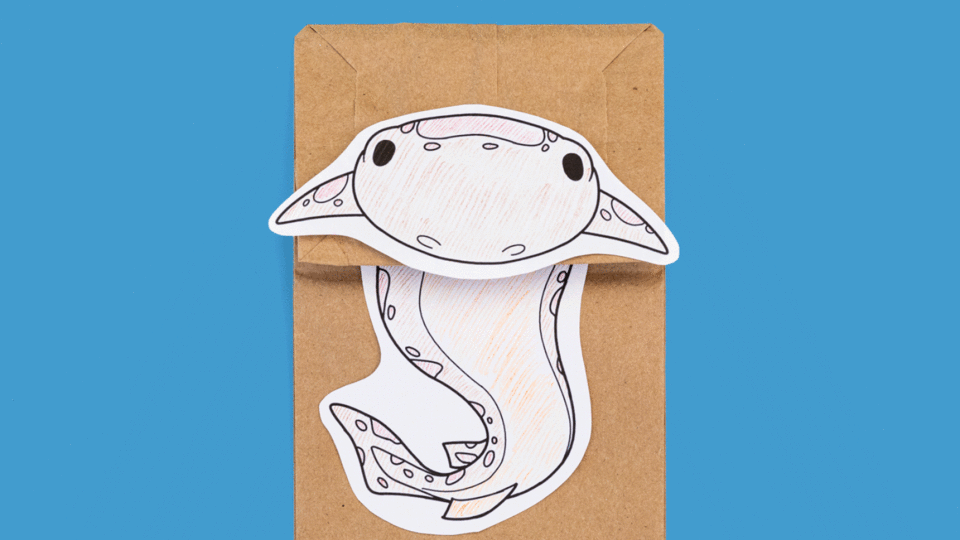
Hungry for more shark content? You’re fin the right place. Dip your toes into four days of shark-tastic activities for ages 8–11.
Turn those dog days of summer into shark days with an action-packed roster of 19 hands-on crafts, guided videos, interactive programs, coloring pages, and an ocean-ful of facts about your favorite cartilaginous creatures.
(Please note: While Science @ Home activities are designed for kids, some little ones might need adult help with reading instructions and preparing crafts).
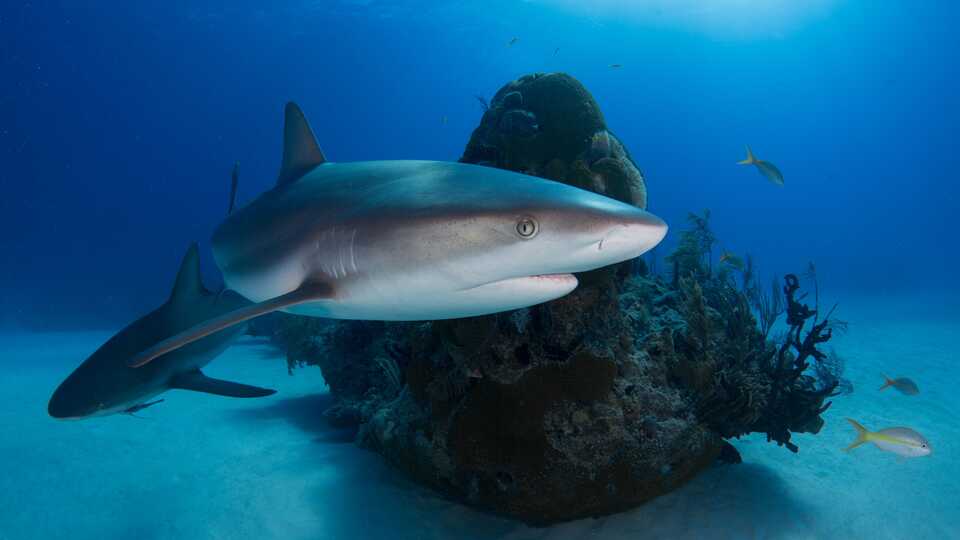
Day 1: Getting tooth know you
Whether you’re a shark pro or shark amateur, there’s always more to learn about these incredible elasmobranchs (a subclass of fish that includes sharks and rays). Dive in! (45-60 minutes)
What’s inside a shark? Sharks have skeletons made of cartilage, the same flexible material that gives structure to our ears and noses. While they have a spine, just like we do, they don’t have any ribs! Instead of a bony skull like ours, they have a chondrocranium made of cartilage. Cartilage also supports other shark body parts, like gills and fins. Can you figure out how this shark’s insides match up with its outline?
Watch Academy biologists feed blacktip reef sharks a fishy lunch. While the blacktip sharks are no longer on exhibit, their “cousins,” the rays, are.
While you watch this video, think about the three questions below. Share your answers with a friend or family member or just think in your head.
- What types of foods do you like to eat?
- What do you notice the blacktip reef sharks eating in the video?
- Like other predators, blacktip reef sharks have pointy, sharp teeth that are good for eating meat, like fish. Take a look in the mirror and notice all the different shapes of teeth that you have. Do you have any teeth that are pointy?
Listen to guiding questions (:00-:55)
Swell sharks are important predators. They help keep the ocean food web balanced by preying on animals such as fish, molluscs, and crustaceans. Swell sharks hunt by either sucking fish into their mouths, or by resting with their mouths open and letting the current carry the prey in. Celebrate sharks with this paper bag swell shark puppet!
There are over 500 different species of sharks all over the world. Some, like the whale shark, are as big as a school bus. Others, like the dwarf lantern shark, can fit in the palm of your hand. In this activity you will find out which type of California coast shark you are closest to size-wise.
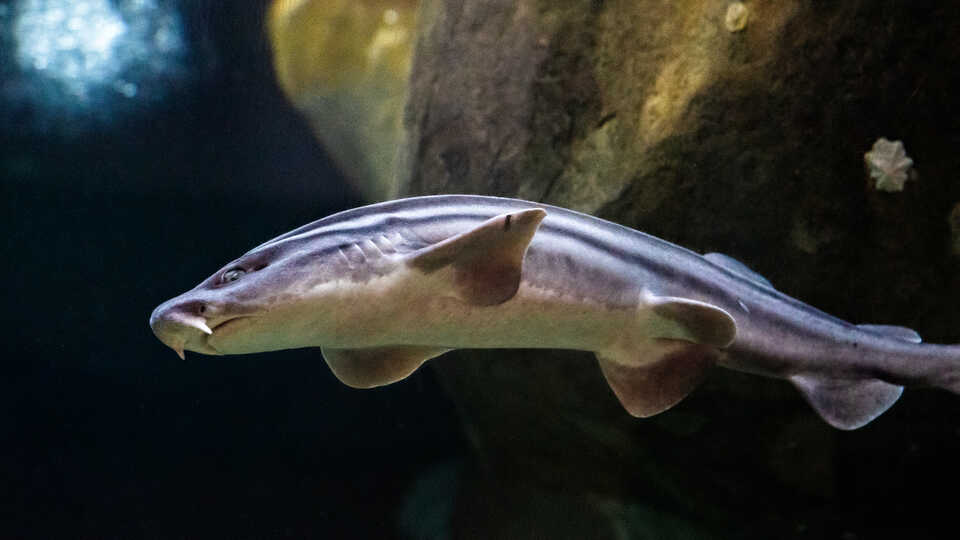
Day 2: Shark diversity
Great white, tiger, and bull sharks get all the attention—but there are more than 500 different shark species around the world! Learn more about the importance of all sharks, from the tiniest to the mightiest. (30-45 minutes)
Explore the oceans of the world with Academy volunteer Anne to find some unique sharks you may have never heard of.
Color the coast of California and meet some of its charismatic critters! How many sharks can you find?
Learn the names of a few different sharks while you seek and find them in this word search.
Watch as a curious shark gracefully swims over to say hello to Academy divers.
While you watch this video, think about the two questions below. Share your answers with a friend or family member or just think in your head.
- Why do you think the shark swam near the divers? What do you think it was doing?
- If you saw a shark swim toward you underwater, how would you feel and why?
Listen to guiding questions (:57-1:30)
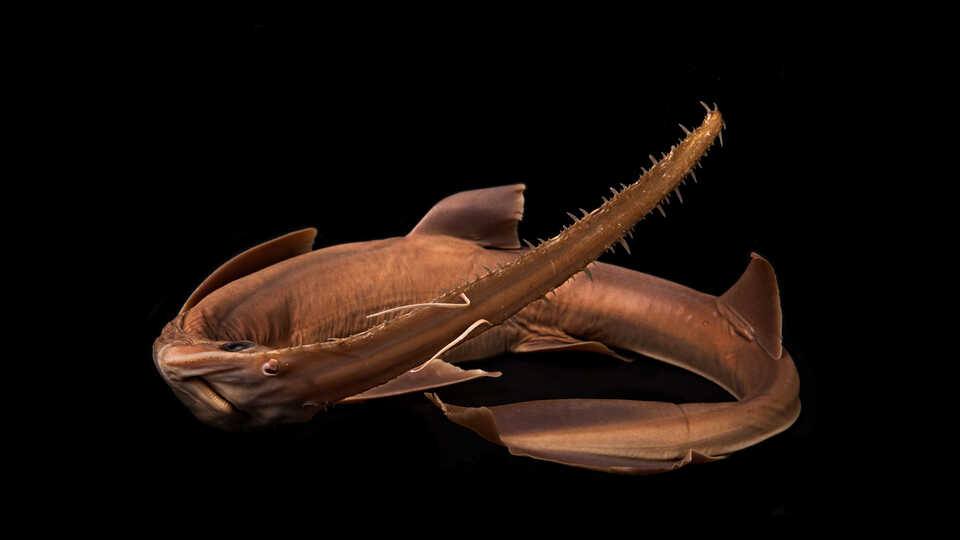
Day 3: Weird and wonderful sharks
450 million years of evolution have resulted in some truly unique and specialized sharks and rays. Today you’ll explore some of these ocean oddities. (45-60 minutes)
With a body like a shark, and a face like a carpenter’s saw, the bizarre sawfish—actually a member of the ray family—never fails to amaze. Join Academy Educator Moriah to get to know the sawfish through this short video from the Academy’s Naturalist Center.
Sharks and remoras have a symbiotic relationship that benefits both animals: The remora attaches itself to the body of the shark and gives the shark a cleaning in exchange for a free ride across the ocean. Craft your own dynamic shark and remora duo.
Academy researchers have discovered a very stealthy new shark species from Central America.
While you watch this video, think about the three questions below. Share your answers with a friend or family member or just think in your head.
- Why might museum collections be a great place to discover new species of sharks?
- What were some of the unique details scientists used to figure out if this was a new species of shark?
- Why was the new shark given its special name?
Listen to guiding questions (1:30-2:10)
Take a closer look at a bat ray jaw by exploring this interactive 3D specimen.
Think about the three questions below as you investigate the ray jaw. Share your answers with a friend or family member or just think in your head.
- What do you notice about the bat ray teeth? What does it remind you of?
- What are some differences between these ray teeth and the teeth of sharks?
- Bat rays like to eat little creatures with hard shells, like oysters and crabs. How would flat teeth help bat rays eat their food?
Listen to guiding questions (2:11-2:56)
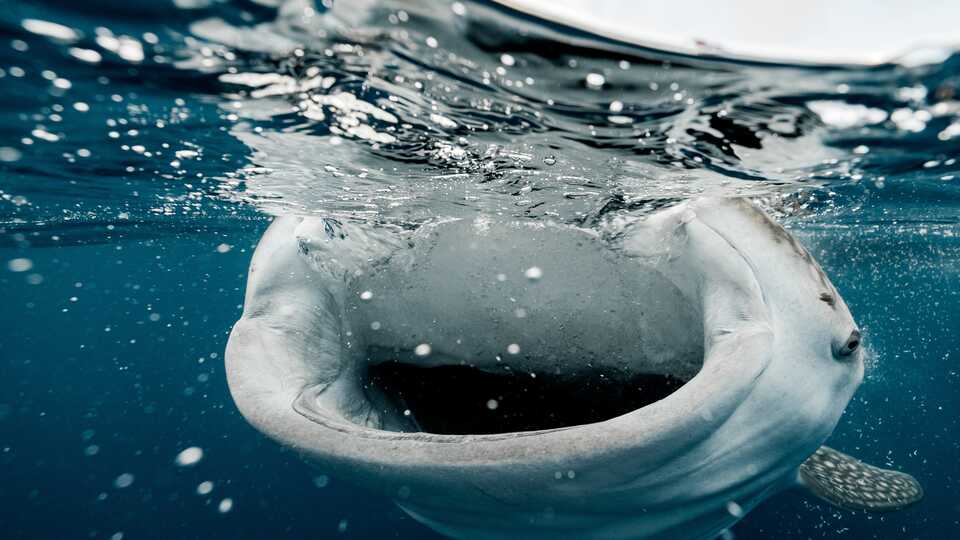
Day 4: Healthy sharks, healthy oceans
Despite being at the top of the food chain, nearly 3 out of 5 shark species are threatened with extinction. By understanding the importance of sharks to ocean ecosystems, you can be a better shark ally. (45-60 minutes)
Who eats who? Create this simplified version of an ocean food web to find out! Sharks are carnivores, so they get energy by eating other animals. Predators like sharks help keep prey populations balanced. If a prey population gets too big, they might deplete their own food source. Food webs can show us how everything is connected.
Scientists use special tags to collect important information about sharks and where they travel. Now you can, too! Use the Ocearch Shark Tracker to follow a shark and learn more about its life.
Did you know that the decisions we make when ordering seafood can impact the health of the ocean? Asking the right questions can help us make more sustainable choices together.
While you watch this video, think about the three questions below. Then, share and discuss your thoughts after watching the video.
- What do you think "sustainable" means? What might sustainable fishing look like?
- Why might you want to limit the amount of some fish that you eat?
- What kinds of questions might you want to ask before buying or ordering seafood, and why?
Listen to guiding questions (2:57-3:49)
If you eat seafood, you can make smart choices when buying it to protect sharks and other at-risk ocean animals. Download Monterey Bay Aquarium's Seafood Watch guide to shop and order sustainably.
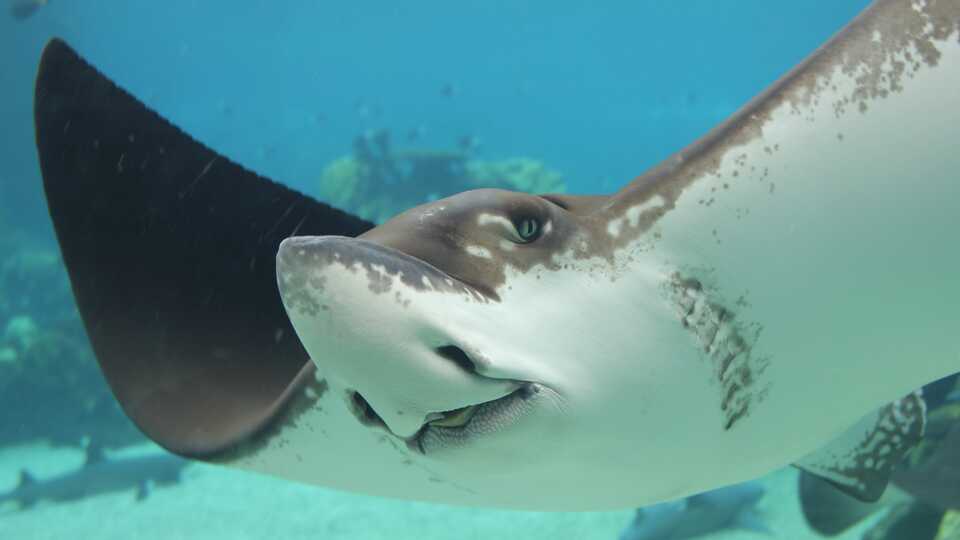
Kid and caregiver extension activities
You don’t have to be a kid to care about sharks! Dig in to some resources adults and kids can enjoy together to better appreciate these vital-but-vulnerable animals.
Dr. John E. McCosker, emeritus chair of aquatic biology at the Academy, reveals his close encounters with sharks.
This video includes images of sharks eating bait.
The Academy's Dr. John E. McCosker shares some sensible advice for swimmers, surfers, kayakers, and divers when sharing space in California waters with white sharks.
Plastic is durable and long-lasting, making it good for packaging things like food—but bad for the environment. How is plastic debris impacting our oceans? Kids and caregivers are encouraged to watch this video together.
While you watch, think about the three questions below. Then, share and discuss your thoughts after watching the video.
- How is plastic debris in the ocean harmful for marine life, and why?
- What are some things people and communities are doing to address the problem of plastic debris in the ocean? What are some things you can do?
- What are some alternatives to plastic packaging that might be better for the environment?
Listen to guiding questions (3:51-4:48)